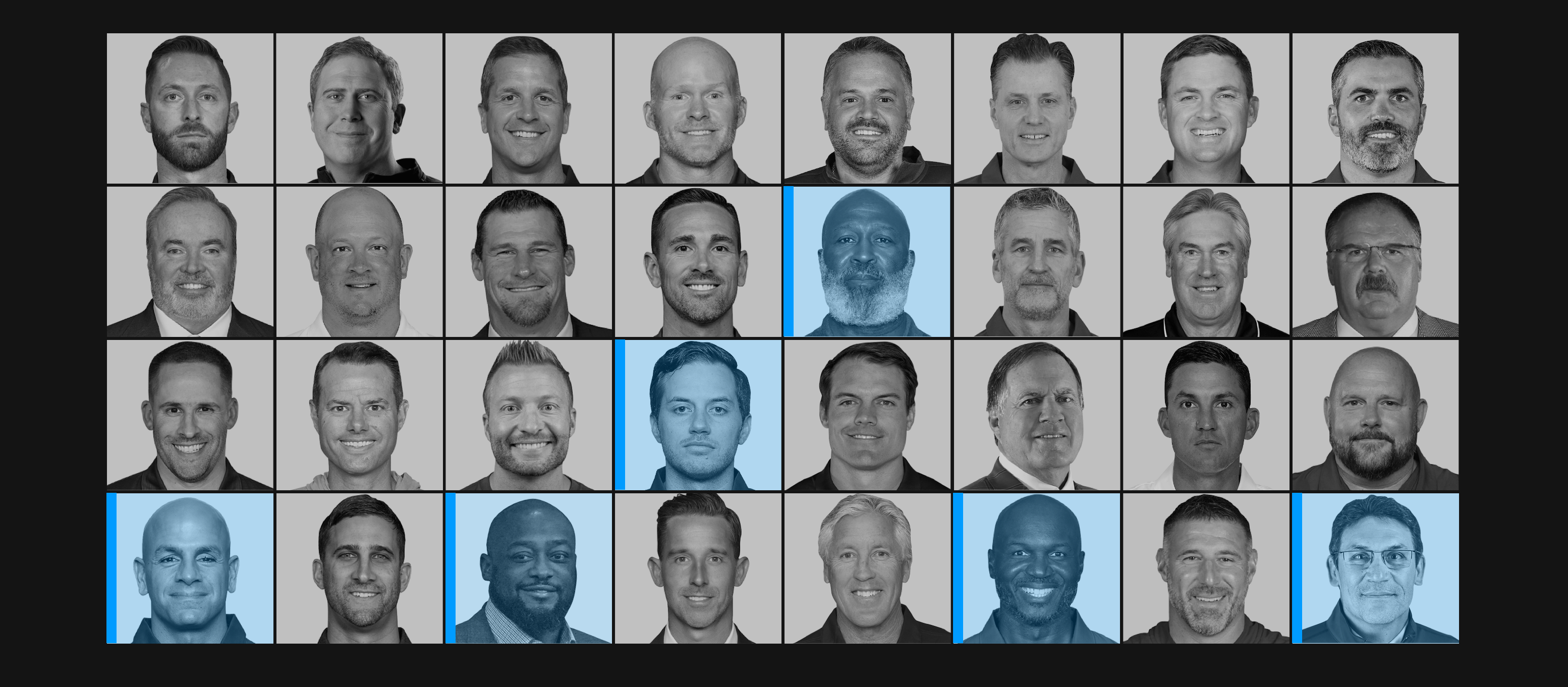[ad_1]

The path to becoming a head coach hasn’t been a straight line for most of the men who lead the NFL’s 32 teams.
Some started in college football. Others started as scouts. Some started at the lowest ranks as quality control coaches, while others parlayed their playing experience into positions higher on the coaching ladder.
Some have found their way to the head coaching ranks by becoming defensive experts. Most have risen to the top by coaching the quarterbacks or tight ends.
One common thread among them: In the past decade, 58 of the 72 head coaches hired by NFL teams have been white, according to the NFL’s most recent diversity and inclusion report.
In a league where 70% of the players are people of color, and the majority are Black, only 19% of current head coaches are people of color, and only three are Black. It’s a stark disparity, given that more than three decades have passed since the Las Vegas Raiders made Art Shell the first Black head coach of the modern era in 1989.
The Rooney Rule, which requires teams interview diverse candidates for head coaching spots, is nearly two decades old, but the same number of Black coaches are leading NFL teams today as in 2003.
A USA TODAY analysis of 2022 head coaches and their staffs helps illustrate both the arduous paths that today’s head coaches of color have traveled, as well as the impending challenges their potential successors might face in years to come.
For those who don’t use college coaching or other league experience as an avenue into the NFL, prospective head coaches generally have four broad steps to climb.
Six of the 10 head coaches hired this offseason have offensive backgrounds – almost exactly the same as the league as a whole. But first-year coach Mike McDaniel, who is biracial, is the only non-white NFL head coach with an extensive offensive resume.
Positional background matters, too. A USA TODAY Sports analysis found that 13 of the 19 head coaches from an offensive background had a prior stint as an NFL quarterbacks coach, while only one previously coached running backs.
That’s not to say a coach with defensive background can’t flourish in the NFL. Look no further than Bill Belichick’s six Super Bowl championships as head coach of the New England Patriots or Mike Tomlin’s tenure with the Pittsburgh Steelers, who haven’t had a losing season in his 15 years as head coach.
Belichick and Tomlin are among the six current head coaches who previously coached defensive backs. Eight had a prior stint as an NFL linebackers coach. And Dennis Allen of the New Orleans Saints is the only one who coached the defensive line; He worked as the Saints’ assistant defensive line coach from 2006 to 2007.
USA TODAY Sports compiled the career histories of every coach in the NFL at the start of this season, dating back to each coach’s first full-time coaching job in the NFL or college. (This excludes graduate assistant, intern and volunteer coaching roles.)
After securing that first gig, current head coaches spent an average of 16 seasons coaching professionally before getting a shot at the top job in the NFL.
While Tomlin quickly ascended to the head coaching job in Pittsburgh, other head coaches of color took more winding routes.
New York Jets coach Robert Saleh, for example, got his start as a college coach before breaking into the NFL as an intern with the Houston Texans in 2005. It took him nearly a decade to work his way up to a job as a position coach.
Here are the routes that all 32 NFL head coaches took to reach their current jobs, visualized across five broad levels of the coaching ladder: Low-level assistant, assistant position coach, position coach, coordinator and head coach.
The bottom line on the charts represents time spent out of the league – in the college ranks, for example, or any other non-NFL coaching job.
Contributing: Tom Schad
Published
Updated
[ad_2]
